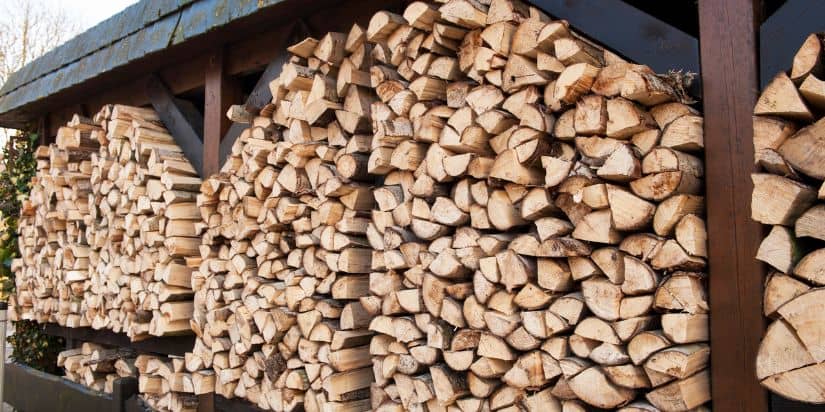Thursday, November 7, 2024
How to store firewood the right way with a diy shed

Alright, folks, let's talk about firewood storage. We all know that feeling â€" the crisp autumn air, the smell of woodsmoke, and the cozy warmth of a fireplace. But to keep that fire going, you need a good stash of seasoned wood, and that's where proper storage comes in. And if you're anything like me, you're probably thinking, "I need a shed for this!"
Let's face it, a DIY firewood shed is a fantastic project. It's a relatively simple build that even a novice woodworker can handle, and it'll pay off in spades, especially if you're tackling a larger amount of wood. Plus, it adds a touch of rustic charm to your yard.
So, let's get into it.
Planning Your Firewood Fortress
Before you start hammering and sawing, take a moment to consider the following:
Size matters: How much firewood do you typically go through in a season? Are you aiming for a small stack or a lumberyard's worth? Once you figure out the volume, you can determine the shed's dimensions. A good starting point for a single cord of wood (a common measurement) is a shed roughly 8 feet long, 4 feet wide, and 6 feet tall.
Location, location, location: Your firewood shed needs a well-drained spot, preferably in a sunny area. It's also a good idea to position it away from any combustible structures, such as your house or garage.
Material matters: You can build your shed with a variety of materials: pressure-treated lumber for longevity, affordable plywood, or even repurposed pallets for a rustic look. Just remember, whatever you choose, make sure it's sturdy enough to withstand the elements.
DIY Firewood Shed Construction: Step-by-Step
Now, let's get down to the nitty-gritty. Here's a breakdown of the construction process, keeping it simple and accessible:
1. Foundation: You can go fancy with a concrete slab or a gravel base, or keep it simple with pressure-treated lumber laid on a bed of gravel for drainage. Just make sure your foundation is level.
2. Framing: Building a basic rectangular frame is the core of your shed. Use 4x4 posts for the corners and connect them with 2x4s for the walls and roof. Make sure you create supports for the roof and any shelves you'll add.
3. Sheathing: Here's where you get to choose your material. Plywood is economical, while solid lumber gives a more finished look. Attach the sheathing to the framing with screws or nails.
4. Roofing: A simple gable roof is easy to build. Lay down rafters, sheathing, and then choose your roofing material â€" shingles, metal, or even corrugated plastic sheets.
5. Siding: For a traditional look, opt for wood siding. Otherwise, consider metal siding for durability and low maintenance.
6. Door & Windows: A simple door and a small window will allow you to access your firewood and let in some light.
7. Finishing Touches: This is where you can get creative. Paint your shed to match your home's aesthetic or add a rustic touch with weathered wood. Don't forget about a sturdy roof overhang to protect your wood from rain.
Storage Secrets: Keeping Your Firewood Happy
Okay, so you've got your shed built. Now, let's talk about stacking that firewood like a pro:
Don't overcrowd: Leave some space between the logs to allow for good airflow. This helps the wood dry properly and prevents mold.
Stack it high: Elevate the bottom layer of wood slightly off the ground using pallets or bricks to improve airflow.
Cover it up: A roof is essential, but you can also add a tarpaulin to protect your stack from heavy rain and snow.
Orientation is key: Stack the logs horizontally, with the cut ends facing the direction of the prevailing wind. This helps with air circulation and drying.
The power of space: If you have a large shed, consider dividing it into sections for different types of wood. Separate seasoned wood from recently split wood to maximize drying time.
Firewood Fun Facts
Did you know that a cord of wood is roughly equivalent to a stack of firewood that measures 4 feet wide, 4 feet high, and 8 feet long?
Hardwoods, such as oak, maple, and hickory, burn longer and hotter than softwoods, like pine and spruce.
Seasoning firewood for at least six months before burning ensures it burns efficiently and produces less smoke.
Never store unseasoned firewood directly against your house â€" the moisture could lead to problems with rot and insect infestations.
Your Firewood Haven is Ready!
Building your own firewood shed isn't just about practicality; it's about adding a touch of charm and functionality to your property. With a little planning, some elbow grease, and a sprinkle of ingenuity, you'll have a cozy haven for your firewood, ready to keep you warm through the chilly months ahead.
So, what are you waiting for? Grab your tools, put on your favorite playlist, and get ready to build your own firewood fortress. You'll be stoked when you have that perfect pile of seasoned wood ready to ignite your fireplace!
No comments:
Post a Comment
Note: Only a member of this blog may post a comment.